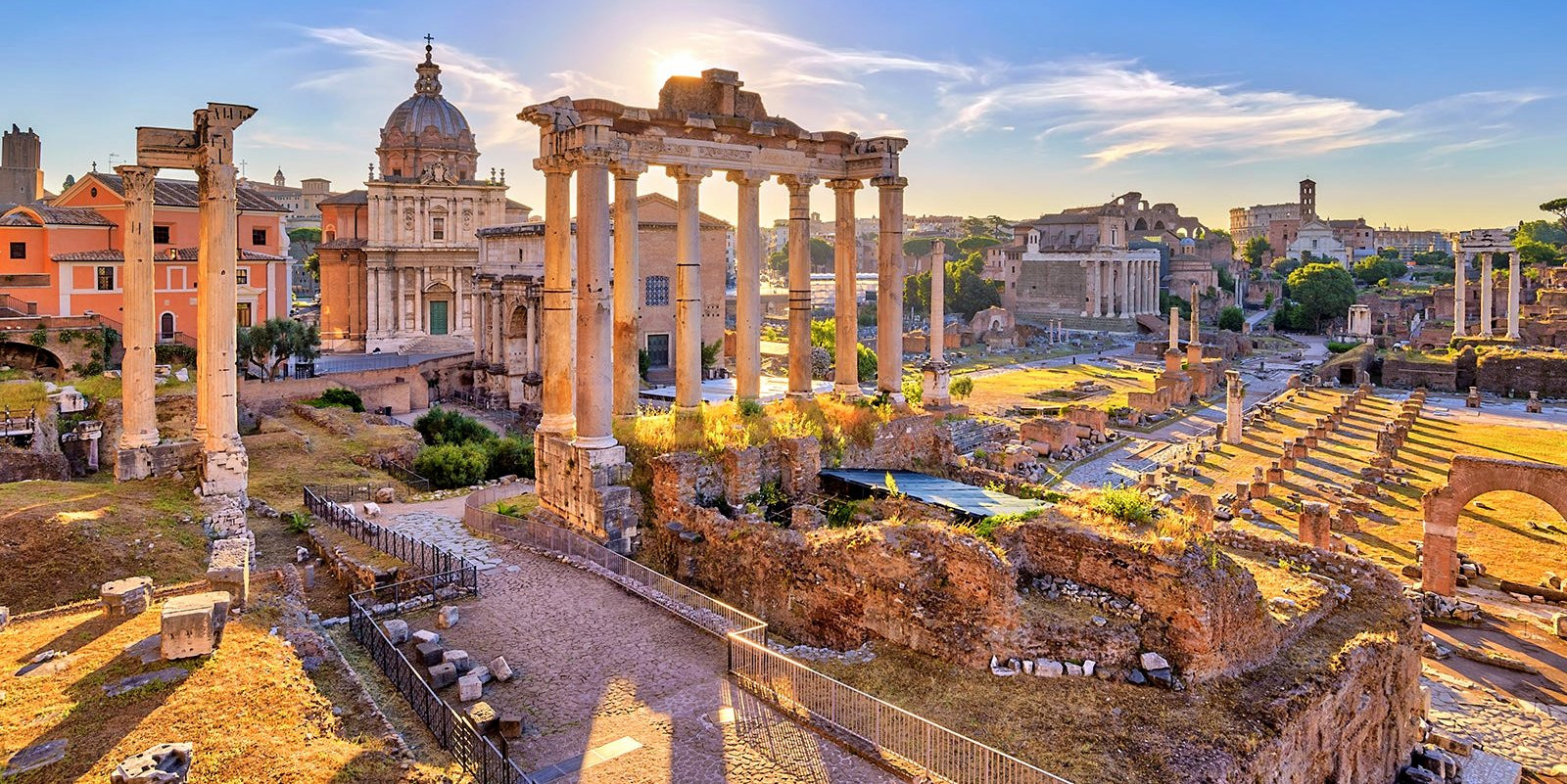Discover the majestic allure of Rome, a city where the echoes of the ancient world blend seamlessly with the vibrancy of modern life. Renowned for its unparalleled contributions to the world of art, architecture, and sculpture, Rome stands as a testament to human creativity and ingenuity. From the awe-inspiring Colosseum that showcases Roman architectural innovations to the divine Sistine Chapel, a masterpiece of Renaissance art, the city is a treasure trove of historical and cultural riches. Marvel at the Baroque architecture that adorns the streets of Rome, with the Trevi Fountain and Piazza Navona offering breathtaking examples of artistic brilliance. Delve into the heart of ancient Roman art and sculpture, witnessing the timeless beauty that has influenced Western art for centuries. Rome's rich cultural heritage is preserved in its iconic landmarks, each telling a story of the city's glorious past and its significant role in shaping the art and architecture we revere today. Join us in exploring the eliteness of Rome's art, architecture, and sculpture, where every corner, every street, and every monument invites you on a journey through history and beauty, leaving you enchanted and inspired.

At Relax Getaways, we pride ourselves on being the premier choice for discerning travelers seeking to immerse themselves in the eliteness of Rome's art, architecture, and sculpture. Our curated tours are designed to offer an unparalleled experience of the Eternal City, taking you beyond the surface to explore the rich tapestry of history, culture, and artistic brilliance that Rome has to offer. From the ancient marvels of the Colosseum and Pantheon that stand as testaments to Roman architectural innovations, to the sublime beauty of Renaissance art in the Vatican Museums and the Sistine Chapel, we ensure that our guests experience the full majesty of Rome's artistic heritage. Our expert guides are passionate about bringing the city's history to life, offering insights into the famous Roman monuments, classical sculptures, and Baroque architecture that make Rome a living museum of unparalleled splendor. With Relax Getaways, you're not just visiting Rome; you're being introduced to the heart and soul of the city by those who know it best. Our commitment to excellence, attention to detail, and dedication to creating memorable experiences make us the best company for exploring the eliteness of Rome's art, architecture, and sculpture. Join us, and let Relax Getaways show you why Rome continues to captivate the hearts and minds of all who wander its ancient streets.
Few cities in the world capture the imagination quite like Rome. Known as the “Eternal City,” Rome is not only the capital of Italy but also the cultural heartbeat of Western civilization. From its grandeur in ancient times to its legacy as a cradle of Renaissance and Baroque art, Rome is a living museum. Walking through its cobbled streets feels like stepping into different eras at once—where ancient ruins, Renaissance masterpieces, and Baroque brilliance coexist in harmony.
The Glory of Roman Architecture
Roman architecture is legendary for its innovation and endurance. Structures built nearly two millennia ago still stand as symbols of strength, beauty, and vision. The Colosseum, perhaps the most iconic, is not just an amphitheater but a monument to Roman engineering and social life. Built with concrete and arches, it remains a marvel of design and practicality.
Equally significant is the Pantheon, whose massive dome with its central oculus has inspired architects for centuries. Its perfect balance of proportion, space, and light continues to leave visitors awe-struck. Even in ruins, sites like the Roman Forum and Palatine Hill reveal the city’s architectural grandeur and its role as the center of politics, commerce, and religion.
The Artistic Renaissance
While ancient Rome set the foundation for Western art, the Renaissance and Baroque periods elevated the city into the world’s artistic capital. Masters like Michelangelo, Raphael, and Caravaggio transformed Rome with their genius.
Michelangelo’s frescoes on the ceiling of the Sistine Chapel are a breathtaking testament to human creativity and spiritual devotion. Nearby, Raphael’s frescoes in the Vatican Museums embody harmony and divine inspiration. Caravaggio, known for his dramatic use of light and shadow, brought a new emotional depth to painting, influencing generations of artists.
Rome’s art is not confined to museums. Every piazza, church, and fountain tells a story. The Trevi Fountain, designed by Nicola Salvi, is a theatrical masterpiece where sculpture and water blend seamlessly, symbolizing abundance and vitality.
Sculpture: The Eternal Expression
Roman sculpture carries an eliteness that blends classical precision with emotional realism. Ancient Roman sculptors perfected the art of portraiture, capturing not just the likeness but also the character of emperors, generals, and citizens. Busts of Julius Caesar or Augustus, for example, offer more than historical records—they are windows into personality and power.
The Renaissance revived sculpture as a divine art form. Michelangelo’s “Pietà” in St. Peter’s Basilica radiates both sorrow and serenity, embodying the human spirit in marble. Bernini, the genius of Baroque sculpture, brought motion and drama into stone. His works like “Apollo and Daphne” and “The Ecstasy of Saint Teresa” make marble appear alive, almost breathing with energy.
Rome as a Living Canvas
What makes Rome exceptional is its seamless blending of art, architecture, and sculpture into everyday life. The city itself feels like a gallery without walls. Public squares like Piazza Navona and Campo de’ Fiori are adorned with fountains and statues. Churches, many of them free to enter, house masterpieces that anywhere else would sit behind museum glass.
This eliteness lies not just in the grandeur of Rome’s heritage but in its accessibility. Art is everywhere—on walls, streets, monuments, and palaces—inviting locals and travelers alike to immerse themselves in beauty.
Conclusion
Rome is not simply a destination; it is an experience that transcends time. Its art speaks of divine inspiration, its architecture of innovation, and its sculpture of human emotion immortalized in stone. To witness Rome is to witness the heights of human creativity across centuries. The city stands as proof that beauty, once created, can indeed be eternal.


